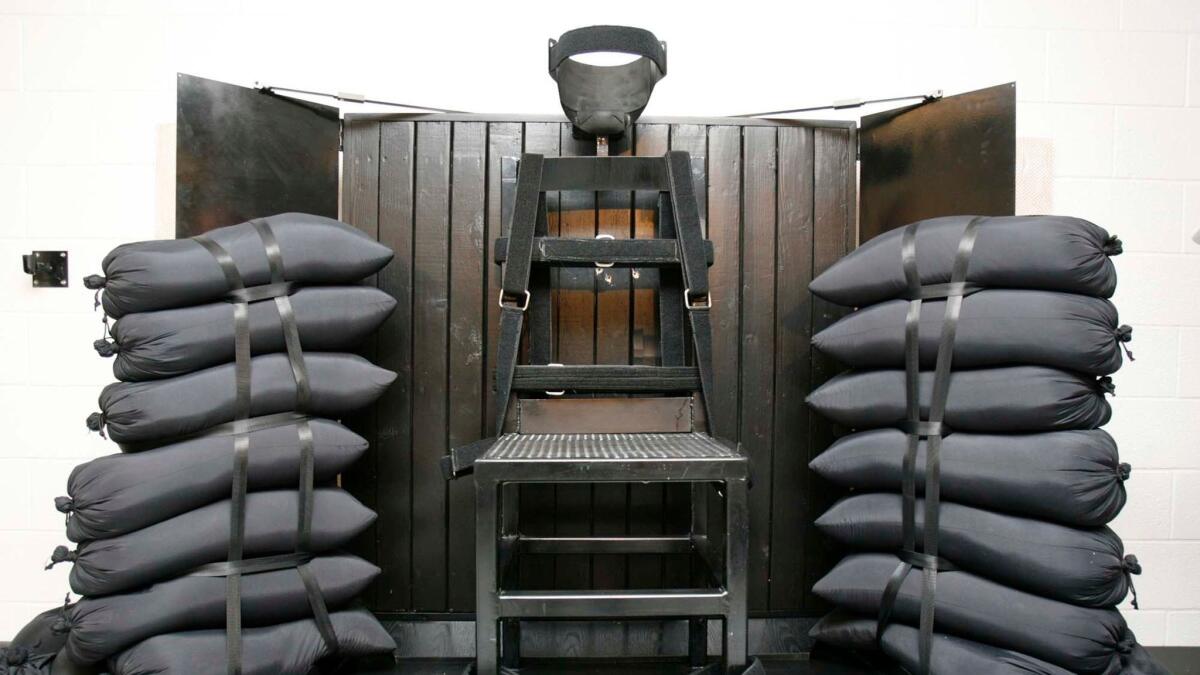Op-Ed: The more we confront the death penalty, the less we like it

California’s decision on Nov. 8 to reject Proposition 62 came as no surprise to those of us who study capital punishment. No jurisdiction in human history has ever permanently abolished the death penalty via plebiscite. The reason is simple: referenda ask voters to respond at the level of symbolism, and voters rarely resist abstract appeals to “law and order.”
If citizens confront the death penalty in concrete context, however, they’re willing to end it.
When, for example, elected representatives consider death penalty legislation and are exposed to weeks or months of testimony on how capital punishment actually works, they — unlike often-impulsive voters at polling stations — sour on the practice. Over the past decade, state legislatures have moved in only one direction on the question of capital punishment. Six state legislatures have jettisoned the death penalty — New Jersey, New Mexico, Illinois, Connecticut, Maryland, and Nebraska — while none has reinstated it. Two other state legislatures — New York and Delaware — have declined to revive the death penalty after their highest courts struck it down.
When voters grapple with the death penalty in their backyards, they also turn against it.
The example of Nebraska is particularly revealing. A referendum just restored the death penalty there, but only after the Republican Legislature voted to abolish it and a super-majority voted to preserve that abolition over the governor’s veto. In this reddest of red states, the legislature moved strongly against the death penalty after deep engagement in hearings with issues such as public safety, budgetary concerns, wrongful convictions and the appropriateness of state killing.
When voters grapple with the death penalty in their backyards, they also turn against it. In recent contests in major death penalty states — Texas, Alabama, Louisiana and Florida — voters in local elections have ousted prosecutors who championed the death penalty and sought it indiscriminately. Consider Angela Corey’s fate. As district attorney in Jacksonville, Fla., she led her county to produce more death sentences per capita than any other locality in the United States. Her constituents responded by voting overwhelmingly to oust “the cruelest prosecutor in the country,” as the Nation magazine once called her.
Prosecutors and juries get closer than anyone — save the executioner — to the workings of the death penalty, since they must decide, respectively, whether to seek it or impose it in a particular case. And in recent decades, both groups have overwhelmingly favored life over death. The national decline in death sentences is unprecedented and spectacular. From a high of more than 300 yearly in the mid-1990s, death sentences have fallen more than 80% to fewer than 50 last year.
What accounts for this striking reduction in public support for the death penalty by those who directly engage with the issue?
The death penalty is not a necessary tool to prevent crime, as many law enforcement officials acknowledge. The National Research Council of the National Academy of Sciences concluded in 2012 that there is no reliable evidence that the death penalty helps to deter murder. Nor is the death penalty the only just response to the most heinous crimes, as its elimination in most democratic states attests. Indeed, the states that are most committed to retaining the death penalty, such as China, Iran, Pakistan and Saudi Arabia, are those least committed to justice in the form of fundamental human rights.
Against its minimal benefits, the death penalty imposes staggering costs, financial and otherwise. In particular, those who directly encounter the death penalty fear the risk of executing the innocent and imposing the death penalty not on the “worst of the worst” but on the basis of race and other illegitimate factors.
Voters might continue to register their abstract support for the punishment in referenda and initiatives, but engaged decision-makers seem increasingly unwilling to produce death sentences, pointing toward a continued decline.
The Supreme Court, in determining what constitutes a “cruel and unusual” punishment, looks primarily at trends in both legislation and actual practice. If trends continue, referenda notwithstanding, the practice of capital punishment will wither away until the Supreme Court finally performs the constitutional coup de grace that ends the death penalty for good. Such a future will bring us — finally — into alignment with the rest of the Western democracies who have firmly abolished it.
Carol Steiker is a professor at Harvard Law School. Jordan Steiker is a professor at the University of Texas School of Law. They are co-authors of “Courting Death: The Supreme Court and Capital Punishment.”
Follow the Opinion section on Twitter @latimesopinion or Facebook
More to Read
A cure for the common opinion
Get thought-provoking perspectives with our weekly newsletter.
You may occasionally receive promotional content from the Los Angeles Times.






